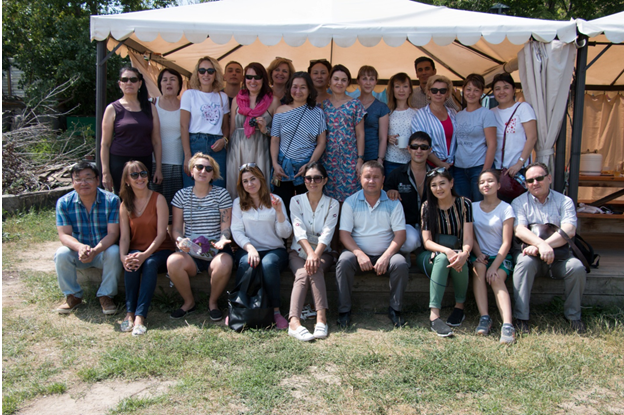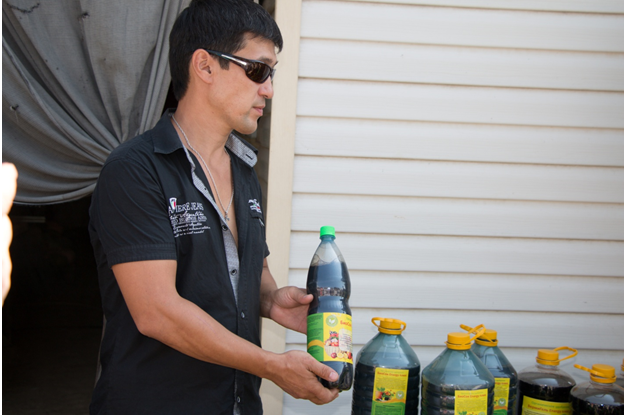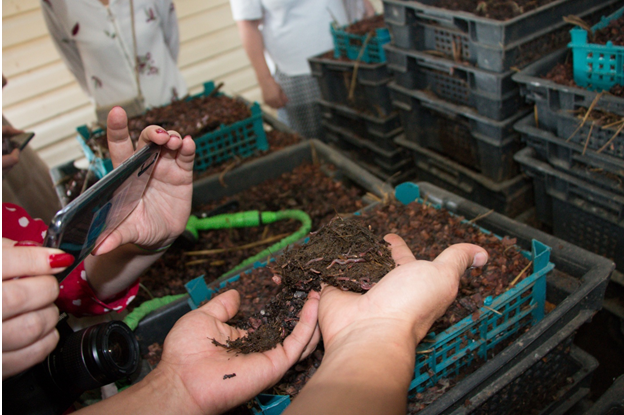
Based on the example of an eco-farm near Almaty, Kazakhstan
“Land resources are already under increasing pressure from human activities, exacerbated by climate change. Yet, keeping global warming well below 2°C can only be achieved by reducing greenhouse gas emissions in all sectors, including land use and food sector” – was the message of the latest report of the Intergovernmental Panel on Climate Change (IPCC). For two days of August 21-22, 2019, reporters and bloggers from Central Asia had an opportunity to discuss the IPCC Special Report on Climate Change and Land Use in the course of a workshop organized by the Central Asian Regional Environmental Center under its “Climate Change Adaptation and Mitigation Program for the Aral Sea Basin (CAMP4ASB).”
Is it possible to ensure adaptation of agriculture to climate change? Is it possible to reduce greenhouse gas emissions in this sector without risking food security and economic development? Such questions inevitably surface during discussion on agricultural development trends in the region. To answer these questions, journalists and bloggers went on a field trip to “EcoFermer” Educational Center, located in the village of Kemertogan outside of Almaty. It is not a demonstration center, but a real farm operating with economic profitability and supplying various agricultural and organic farming produce.
The farm owner Denis Ten presented all areas of the farm’s development to the guests: growing vegetables and berries, grape snails, quails, rabbits, goats, sheep, pigs, production of health benefiting donkey milk, beekeeping, drying of vegetables and fruits, and, until recently, aquaculture production. Each of these areas requires investments, but over time, it provides certain income level and jobs for people in rural areas.
Recently this area of nonproductive land was suitable only for construction of a large suburban house; today however, this plot has a wide range of organic farming technologies, organic waste processing, renewable energy, energy-efficient construction, and conservation of natural resources. In addition, many of the presented approaches use local materials that do not require transporting construction materials over long distances with large carbon dioxide emissions. At the same time energy-efficient buildings contain various vegetable products, which after adding donkey manure, makes the walls stronger than concrete. Finally, domed buildings are houses, which are “warm in winter and cool in summer” with least fuel consumption for heating and no need for air conditioning.
The visiting participants paid special attention to the cycle of organic waste processing (bird droppings, dung from small cattle and donkeys), used for the production of biogas in a plant designed for 10 cubic meters. Biogas is used for heating, cooking and is convenient in everyday life, since it has much less smoke residue on the dishes. Organic residues from biogas production with the help of California worms turn into organic fertilizer, which is in high demand in the markets of Kazakhstan and neighboring Central Asian countries ("Biosok" solid bio-compost and liquid organic fertilizer). Moreover, California worms help reduce methane emissions from organic waste and represent much-demanded product on the market both for processing organic waste by other farms, and as feed for birds and fishing.
An important aspect is that Denis Ten generously shares his best practices and experience with other farms. Currently he plans to organize workshops for 1000 women of Almaty region providing them with all necessary ingredients free of charge to promote organic waste processing.
While discussing the possibilities of organic farming with lower greenhouse gas emissions, journalists raised an issue with the lack of effective state support for innovative approaches to land use. Unfortunately, Kazakhstan still subsidizes buying only chemical fertilizers by farmers, but this support is not available for environmentally friendly organic fertilizers. However, certain shifts in this direction are happening with the first step of subsidizing biogas plants.
The learning experience journalists and bloggers had while visiting a real life example of organic farming made it possible to see that opportunities for mitigating the anthropogenic impact on climate exist not only within the energy sector, transport, and at the level of major office buildings and apartment complexes. They exist also for agriculture and can be in the form of private initiatives with real return on investment and profit.



Vadim Ni
_____________________
Climate Change Adaptation and Mitigation Program for Aral Sea Basin (CAMP4ASB)
